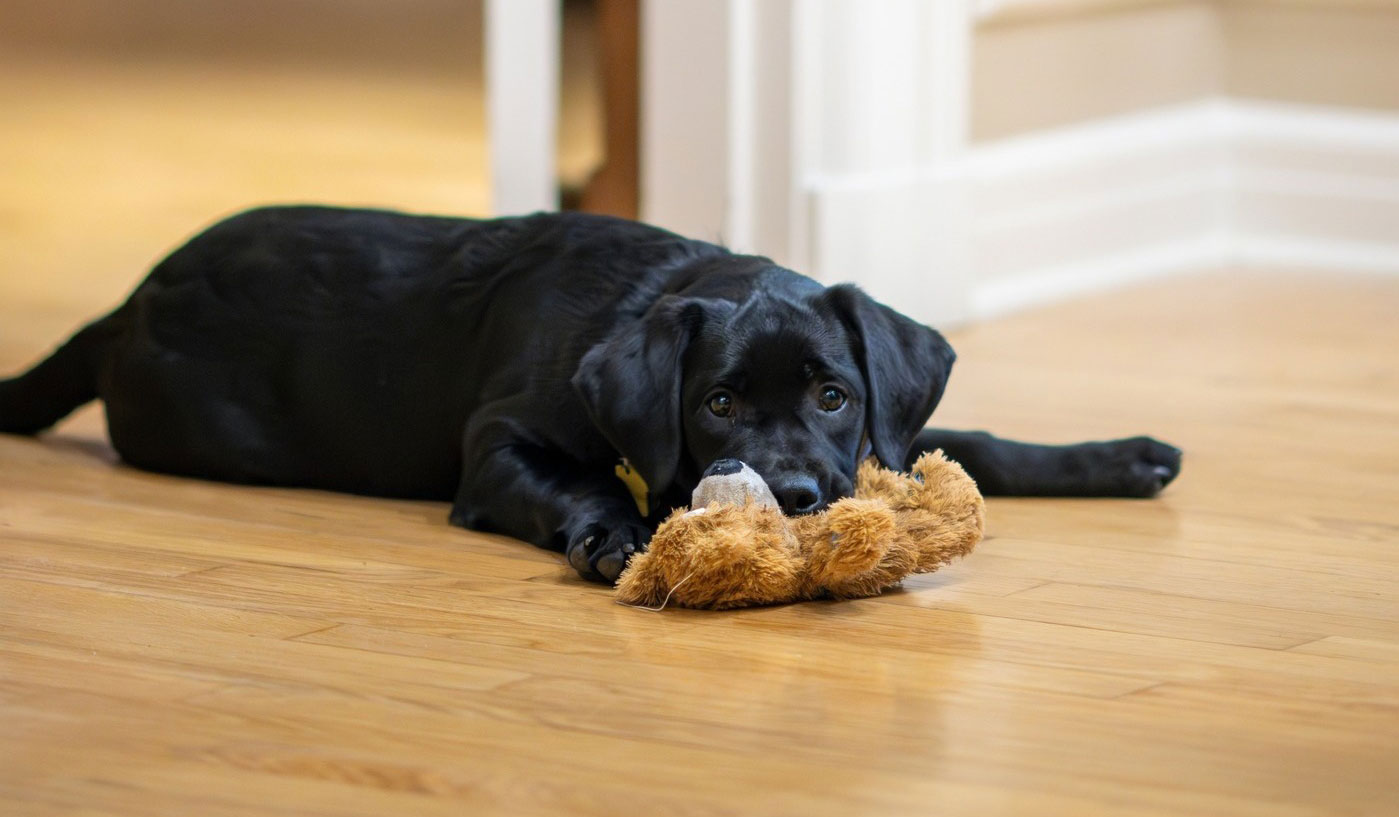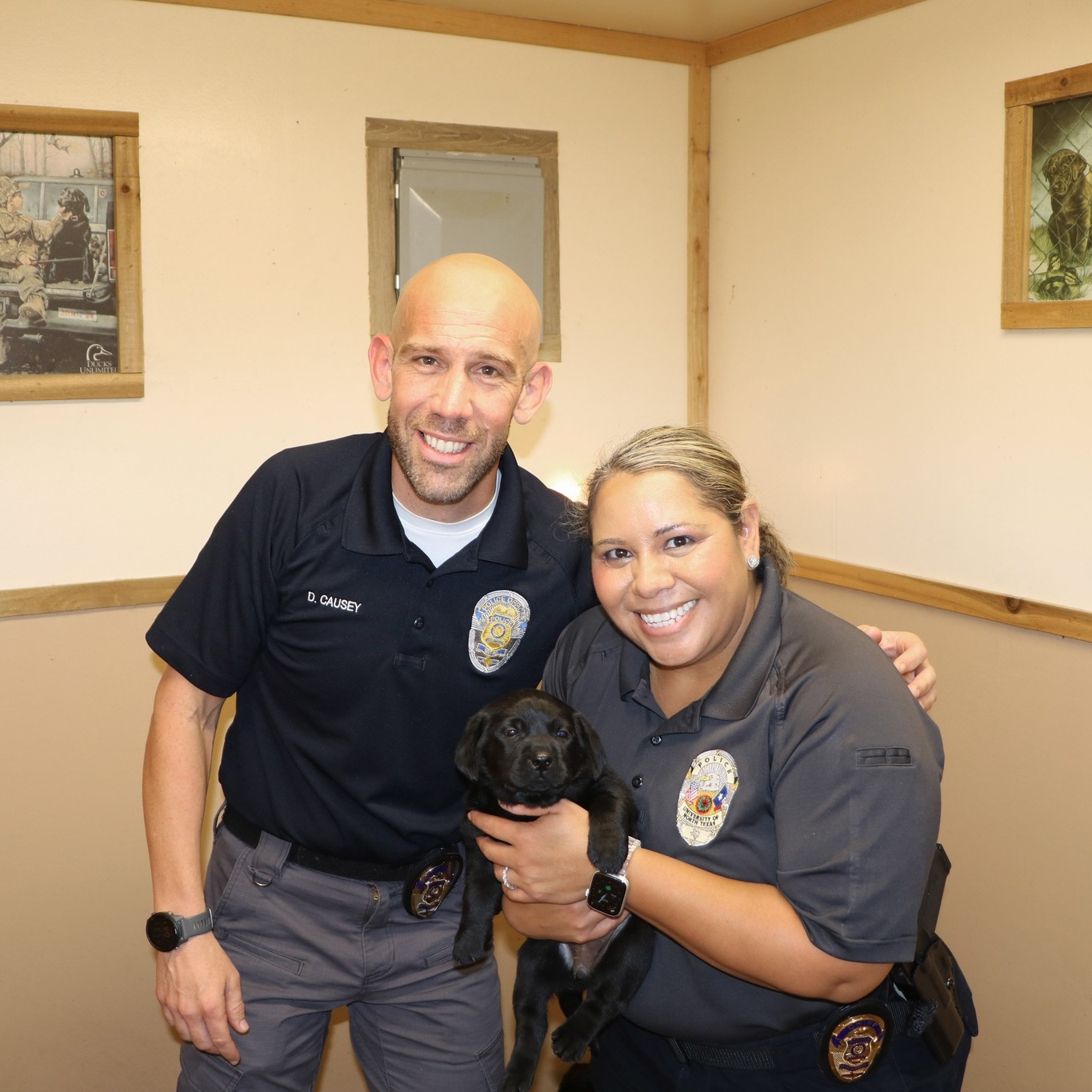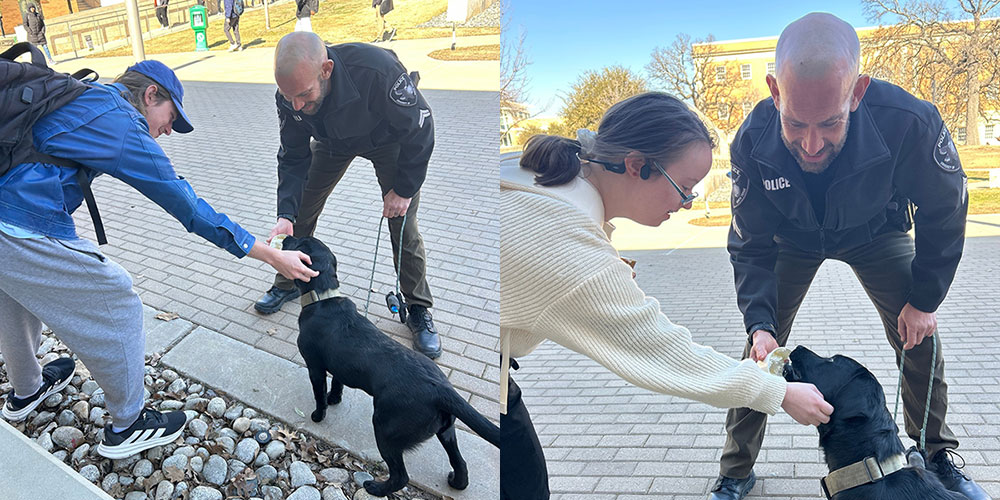Amy Rock (00:00): Hi everyone, and welcome to this episode of the Campus Safety Voices podcast. My name is Amy Rock. I'm Campus Safety's executive editor, and joining me today is Ramona Washington, police chief of the University of North Texas. Ramona is a finalist for this year's Campus Safety Director of the Year Awards program, which honors executives in hospital, university and school security, law enforcement and or emergency management.
Today, Ramona is going to talk about two of many significant initiatives she has spearheaded since becoming chief. So first one we're going to talk about is that during your first year as chief you created a position to assess campus threats. How did you determine that this was a necessary position that was missing?
Ramona Washington (00:42): Sure. There was a couple of things that went into that thought process. The first one being the new chief, like anyone else that comes into a new position, you're looking at the landscape and you're trying to see in our organization what are the things that we're doing really well and where are our gaps, where are the areas where we can improve? And I had a lot of different initiatives that kind of came to the forefront for me. And threat assessment was one of those things. I happened to have been looking at my email one day and we all get a flood of emails and Department of Homeland Security had sent an email and you scroll through and there's all these different programs and things that are out there, and I saw a master trainer certification for threat assessment and management and it really piqued my interest and I clicked on it.
Ramona Washington (01:34): I read through it and I thought, wow, this is very interesting considering the environment that we're in. We're an institution of higher ed. We have a slew of things that we're faced with on any given day that we're navigating trying to figure out if something or someone is a threat to our institution and how do we navigate that? What is the best way for us to address those situations as they come up? But also having spent a lot of time in our criminal investigation section, we would often have individuals or situations that pop up on our radar. We work through 'em and there might be some time before we encounter that person again or that situation. And because the frequency is few and far between, sometimes we forget who that individual was or we forget what the circumstances were and we didn't really have a true system for how we were documenting [00:02:30] everything that we were doing in terms of threat assessment was handled informally.
Ramona Washington (02:34): And so when I saw this program, it consisted of training where you had to apply for the program and be selected. And we were one of the first institutions of higher ed to be accepted into the program here in Texas. And I was super excited for our, we actually sent a sergeant to the program, super excited for him to start the program. He went off, he had to select the class that he wanted to attend. It happened to be in Arizona, went out there for a week and then he came back. And after that week of training, it's designed for them to be able to assess threats and figure out collectively based on facts, what you do with it, but it's also designed for them to teach internally and externally threat assessment. It was kind of twofold. The sergeant came back and he started, he had to complete two more sessions of training inside the department, two other classes that he had to complete the certification, and then he had to complete he to instruct two classes so it wasn't just go to the training and come back.
Ramona Washington (03:42): There was other things that had to be completed for him to be considered a threat assessment and management certification or to be considered to have that. And from that point, we had to figure out internally what that process looked like for us. Because again, the whole point of it was to be able to assess the threats internally and externally, but also to create a more formalized program. And so we looked at our CAD system and we developed a way for us to be able to track and identify those threats so that we could make it better going forward. And essentially we created a way in our CAD system to be able to track it. And we took off with doing our internal and external threat assessments. And so by internal, I say that there are things that are generated internally that we look at just by case reports [00:04:30] and things like that. And then externally, our community will send things our way. We actually created a direct email for threat assessment and we put that on our website so our community members had an avenue to where they could directly report things and bring it to our attention.
Amy Rock (04:47): Threat assessment is so difficult for college campuses, especially those that are open campuses. You have so many students who have autonomy to come and go as they please. And if you're an open campus, you have to consider the general public as well. And there's obviously limited ways that you can limit access. And so it's kind of a totally different animal than a K through 12 school. I mean, I guess the only upside of it is that you have adults who are capable of protecting themselves versus a K through 12 campus where their protection is more on someone else. So little. So I don't envy anyone in your position, but it sounds like you've done a great job with it.
Ramona Washington (05:31): Thank you. I appreciate that.
Amy Rock (05:33): Now, since it's been implemented, since the role has been created, do you have any examples of times? I'm sure there's plenty, but maybe some that stand out of times when this role was especially critical?
Ramona Washington (05:44): Sure. I would go back to our protest last year. We saw Nationwide. There were definitely an uptick in protests that was happening across institutions of higher ed and was no different for us. Back in the spring, we started to see things kind of spinning up and we used our threat assessment position to start tracking information events, activities, and it was very critical. And the threat assessment position was very critical because not only are we monitoring open sources, we're also working with our fusion centers, we're working with our state and federal partners to really navigate and better understand what we're up against. And it was all of those things working collectively that helped us formulate a plan for how we were going to staff and work those protest events.
Amy Rock (06:44): You mentioned fusion centers. I feel like they're just so important because a lot of people who might be become big agitators in these types of things, these protests are also kind of big agitators elsewhere if they're protesting off campus. And so it's sharing information is just you can't work in a bubble. You got to work with your entire community, which I've obviously learned a decent amount about fusion centers in my role just speaking to people like you, and they're just so critical and things like that.
Ramona Washington (07:16): Sure. Fortunately, for us, we had, prior to us even rolling out the threat assessment, that has always been a part of our police department, but even more so when the threat assessment position was created, the sergeant that is doing the work for the threat assessment position had already created relationships with the fusion centers, but we also have a meeting with some of the institutions in our area every month where we come to the table, we discuss cases, what's going on in your campus, what's going on my campus? So it's a lot of information sharing that's going on that helps us be aware of all the things, help us identify offenders that are showing up at all these different campuses. We definitely had individuals who were going to different campuses and kind of being a part of the problem with instigating things. So it was very helpful to have developed and establish those relationships early on.
Amy Rock (08:12): I love hearing about other campuses sharing information together. It's funny, there's obviously so many campuses, but it's such a small world in that last year at our Campus Safety Conference, we had three finalists all from Colorado in the K through 12 realm. And they all knew each other already. Colorado is a pretty big state, but they're like, 'We're sharing information constantly,' and so like I said, it's a big world, but it's so small in a lot of ways.
Ramona Washington (08:42): Absolutely.
Amy Rock (08:43): Yep. And one of my favorite things to talk about, you also spearheaded the adoption of a community service canine. What kind of motivated you to initiate this? Was there kind of something that really pushed it or was it something you'd been considering for a while?
Ramona Washington (09:00): I had never considered it not on the community support side. What I can tell you is that right as I was getting ready to take the chief's role, we were in a position to where I was having to retire our current explosive canine. And I knew that our canine at that point was very, very popular. There was no part of campus that that dog could go, and he did not get attention, love, and attention just all the time. And we got so much engagement with our community from the canine dog. And as I moved into replacing our explosive canine, I thought more and more about do I add another canine to our division or trying to work through what exactly I was going to do in terms of replacing the canines. And I knew I wanted to keep the explosive canine, but I happened to go to a conference, the IACLEA conference, and while I was there, I saw several agencies had their community support dogs, and I began talking with some of them and kind of hearing from them what it looked like for them to go through the process and set it up on their campuses.
Ramona Washington (10:12): And then I also knew locally that there were a few agencies that had community support dogs, and I really thought about the benefits that it would have in terms of our PD and the engagement with our community because just based on what our experiences were with the explosive canine, I knew that it was definitely something I wanted to do. And it was a matter of figuring out what was going to best suit our department and the way we wanted to shape that program. I looked at another agency and their dog lived in their department, and I was like, I don't know that I want our dog to live in our department, but I do want the dog to have a home. And so we went through a process. We had already early on added a position to our community engagement team because like I said, when I became chief, I really looked at where our gaps were and I wanted to make our community engagement a more robust program.
Ramona Washington (11:08): And so not only did I add another officer, I decided, well, you know what? Maybe the community support dog should live in our engagement program because it makes the most sense to do that. And so that's what we did. And so we from there started looking at, well, where do we get the dog from? And that had been a big question of mine was just really researching what that entailed. And I knew I needed to have a hypoallergenic dog. I knew we needed to have a dog that would fit well in the community and work well with people. And our counseling and testing center had a therapy dog. And so we went over, we looked at it, we saw who their vendor was, and we really liked the dog and the vendor. We went and we visited the vendor as well. And it turned out it was not as costly as what I thought it would be to implement. It was a thousand dollars to get the dog itself, and we were able to go down and choose our dog. And it was a really cool experience to do that. We went in, there was a kennel of puppies, and they all had different color like bands on them. And the instructions I was told was, when you go in and the one who comes up to you is the one who you want to take with you. And so it was pretty easy because we had a particular dog that came up to us when we went in there and I was like, oh, that's our dog.
Ramona Washington (12:35): So we chose the dog. We couldn't bring them home immediately because they had to be like six to eight weeks before we could bring them home. And so we waited that timeframe and then from there we came up with a media pitch to how we were going to name the dog. Because right off the bat, we knew that we wanted our community to be a part of and engaged with our dog. And so we came up with the idea that we would do a campaign in the community. It was around football season, and so we chose some names and we let everyone vote on it. And we announced it at one of the football games. So at halftime we went down and we announced the name of the dog. It was really, really cool. A lot of engagement from the community. We ended up having the name Clover, UNT Clover selected as the name for the dog.
Amy Rock (13:23): I love that. Yeah, I mean, you saw these dogs, like you said at the law enforcement conference, just draws people in so you can really see how it brings people together and gets conversations started no matter who the population is that the dog is with.
Ramona Washington (13:39): Sure. And I also thought about inside of our department, it has been a really big hit. It increased the morale of our department. And then as far as the community, one of the things that I thought about is students, faculty and staff. At any given time, you don't know what they're going through. You have students who are here for the first time. You have students who are homesick or they experience hardships in school, they lose loved ones. You at any given time, cannot really know what someone is going through. And you can really never know what that interaction with our community support dog, how that's going to be impactful for them. And it was even such to where when we got our new president, the president took a liking community support dog, and now we have office hours in the president's office. That's funny. So it's been a really big hit for us.
Amy Rock (14:31): What breed is Clover?
Ramona Washington (14:32): We have a lab, a black lab, and like I said, the dog itself was a thousand dollars, but the training that the dog will need is about 3,500. And then the other cost that associated with the dog is just the checkups, the wellness checkups, the shots and things that, and then the food. We paid to have a kennel built at the officer's, the handler's home. And then once they go through the training, they're now considered a therapy dog, and so they could be more engaged with presentations. They can go to different events. So we're close to finishing the therapy, the certification for the dog.
Amy Rock (15:16): I know every school's budget is different, but it sounds like this is one of the least expensive options with one of the biggest outcomes.
Ramona Washington (15:30): Oh my goodness. It is definitely you're going to get more bang for your buck in the amount of money that you're spending, so it's very cost effective. Having spent the amount of money that we spent for explosive canine and just maintaining that program, it made sense to go with a community support doc because you get so much for the money that you're spending, you get a lot back on return.
Amy Rock (15:53): I couldn't think of ‘bang for your buck.’ I was trying to think of return on investment. There we go. Thank you. I was like, what is that stupid phrase that they talk about all the time -- R-O-I, R-O-I.
Ramona Washington (16:04): That's been awesome though. I was very surprised to see internally in the department how the community support dog made a difference. Like at any given day, anyone that walks through that door, they're going over to the office, the officer's office to see the dog. They take turns sometimes taking 'em out for breaks. Sometimes she's in our dispatch, just chilling. If our officer has to go somewhere, sometimes she's down on our hall, we're throwing the ball, and she does. She goes and visits every section of the police department. But we all look forward to seeing her. She is truly now a part of our family.











